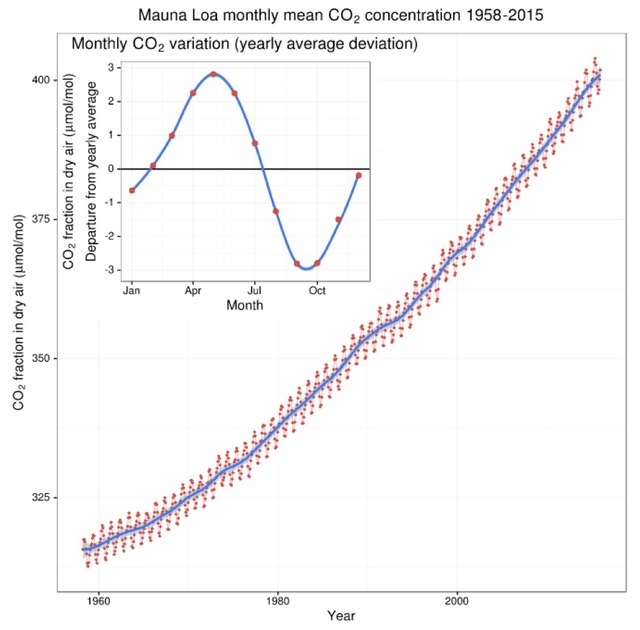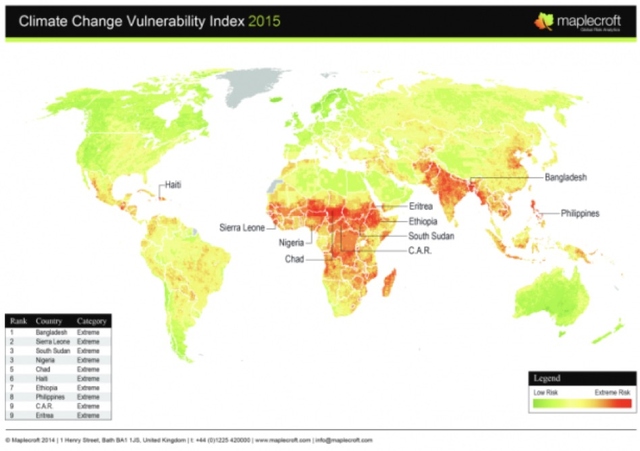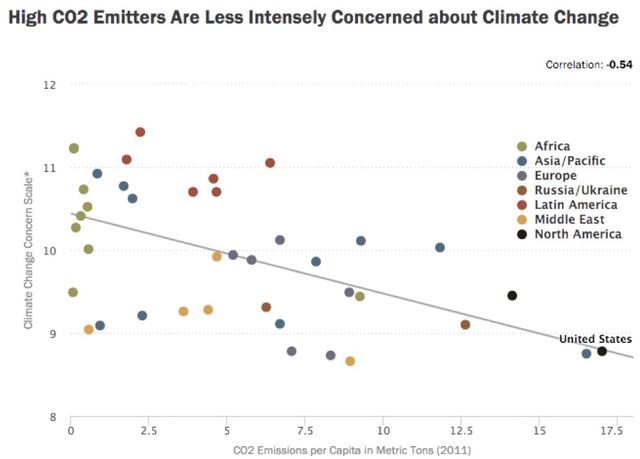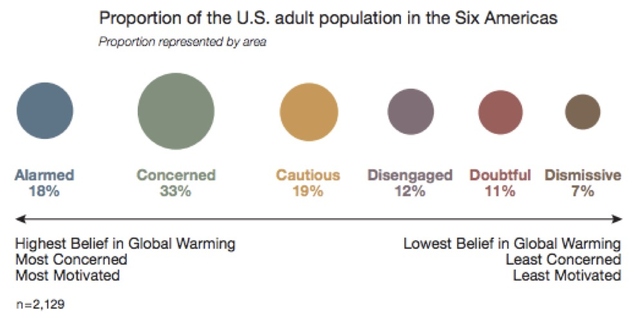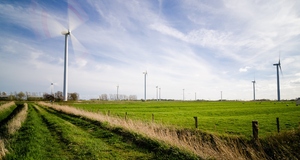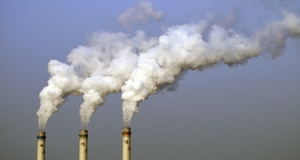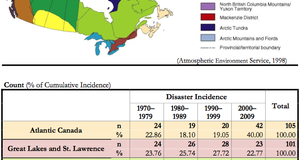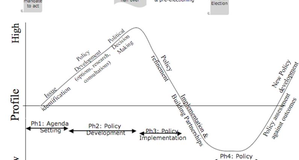The Inequalities of Climate Change and Poverty: Impact Analysis and Potential Solutions
By
2017, Vol. 9 No. 03 | pg. 1/3 | »
IN THIS ARTICLE
In Gallup’s 2016 environment poll, 64 percent of U.S. adults are now worried a “great deal” or “fair amount” about global warming, with a record 65 percent attributing warming primarily to human activities (1). These poll results come several months after the pivotal Paris Agreement taking place at COP 21, the 21st Conference of Parties of the United Nations Framework Convention on Climate Change (UNFCCC). In an unprecedented consensus of the participating 195 countries, on December 12, 2015, the Paris Agreement set global standards to reduce greenhouse gas emissions and limit global temperature rise to well below 2 ˚C. Global warming has been recognized as a significant issue for decades, with annual meetings of the UNFCCC beginning in the mid-1990s. There is a broad consensus within the scientific community, supported by agencies such as the National Aeronautics and Space Administration (NASA), the National Oceanic and Atmospheric Administration (NOAA) and the National Research Council, that climate change is occurring and that humans are contributing to it (2). First, in 1998, the same year the IPCC was established, NASA scientist Dr. James E. Hansen testified before Congress that there was a 99 percent certainty that unnatural warming trends were caused by a buildup of carbon dioxide in the atmosphere (3). In 2004, Naomi Oreskes published one of the first studies of scientific literature on climate change. Upon analysis of 928 abstracts of scientific papers from peer-reviewed journals published between 1993 and 2003, she concluded that there is a scientific consensus on the reality of climate change (4). This sparked several subsequent studies by Harris Interactive (2007), Dennis Bray and Hans von Storch (2008), Peter Doran and Maggie Zimmerman (2009), among others, all of which arrived at similar conclusions (5, 6, 7). In more recent years, publications in the Proceedings of the National Academy of Sciences of the United States (PNAS) and in Environmental Research Letters found 97-98 percent endorsed the significant human causes of climate change. Furthermore, in its Fifth Assessment Report, published in 2014, the IPCC reported that carbon dioxide is 40 percent higher than in pre-industrial times. Between 1880 and 2012, the Earth’s surface warmed 0.85 ˚C and human activity caused most of the warming between 1951 and 2010. Due to warming, heatwaves and heavy rains have also become more frequent since the 1950s and Arctic sea ice has declined on average 3.8% per decade since 1979, leading to an expected global sea level rise between 26 and 82 cm by 2100. In conclusion, the IPCC found that only an aggressive mitigation scenario could keep temperature rise below 2 ˚C (8).It is the poorest people in the poorest nations that are expected to suffer the most from the negative impacts of climate change. I. COP HistoryWhile the United States continues to lag in terms of climate change education and a broad consensus as to the role that humans play in it, the rest of the world has taken action. In November 1988, the World Meteorological Organization (WMO) and the United Nations Environment Programme (UNEP) established the IPCC, which remains to this day the driving scientific force behind international climate negotiations. After several years of negotiations and UN sessions, the UNFCCC was adopted at the United Nations Headquarters in New York and opened for signatures at the Rio Earth Summit in 1992. With 196 signatories (Parties), the first Conference of Parties (COP 1) was held in Berlin in April 1995. At this meeting, the Berlin Mandate was established to lay the groundwork for commitments from developing countries (9). The first major success of the UNFCCC occurred at its third Conference (COP 3), where the Kyoto Protocol was adopted as the world’s first greenhouse gas emissions reduction theory. However, it took several years for these broad outlines of emissions targets to be translated into tangible practices and operational rules. In 2002, the treaty was ratified and took effect in February 2005. Significantly however, while the United States signed the treaty under the Clinton administration, it failed to officially ratify the Protocol. In fact, the treaty was never submitted to the Senate for ratification due to the previous passing of the 1997 non-binding Byrd-Hagel Resolution, which found fault with the agreement’s failure to require developing countries to reduce emissions and cited fears about harm to the U.S. economy (9). In 2009 at COP15 in Copenhagen, Denmark, the continuation of the Kyoto Protocol was endorsed in the Copenhagen Accord. The agreement also recognized the scientific consensus that the increase in global temperature should be below 2 ˚C in order to combat climate change. The 2 ˚C target was first proposed in 1977 by Yale economist William Nordhaus in his paper, Economic Growth and Climate: The Carbon Dioxide Problem. Nordhaus’s rather crude estimate almost forty years ago, has been since ratified by studies from major scientific organizations such as the National Academy of Sciences, making 2 ˚C the international standard (10). Discussions of funding for mitigation and adaptation at COP15 also resulted in the Green Climate Fund to support projects related to mitigation and a global goal to raise $100 billion per year by 2020 for developing countries to decrease carbon emissions (9). In 2012 at COP18 in Doha, Qatar, the Doha Amendment to the Kyoto Protocol created a second commitment period extending to 2020 and set 2015 as the date for the development of a successor document. Subsequent COPs, especially COP20 in Lima, Peru, set the stage for COP21 in Paris, France, in December 2015 (9). II. Paris AgreementIn 2014, expectations for COP20 in Lima were low due to prior agreements of a treaty at COP21 in Paris, France. Instead, COP20 was intended to lay the framework for negotiations a year later, shaping the elements for the text of an agreement and making progress on mechanisms for loss and damages. However, little progress was made throughout the two weeks of meetings due to large divisions between developed and developing countries, each of whom proposed alternative texts for the treaty. Instead, COP20 barely managed to adopt a text, with negotiations continuing for a day after the meeting was scheduled to conclude. Furthermore, in a similar reaction to previous COPs, many described the outcome as “kicking the can down the road.” The agreement reached represented only the bare minimum needed to continue for a year and the bulk of decisions regarding COP21 and the Paris agreement were pushed to future meetings in early 2015 (11, 12). Among these key decisions were controversial issues of Common But Differentiated Responsibilities (CBDR), with disagreements over how emission cuts should be shared between rich and poor countries (12). The following statement by Al Jazeera writer Richard Falk highlights one of the key problems in successfully negotiating a meaningful treaty at COP20 in Lima:
Because the outcome of COP20 in Lima was widely regarded as a failure, resulting in only temporary agreements to sustain the efforts focused on COP21, the UNFCCC established the Intended Nationally Determined Contributions (INDCs). Under this new practice, months in advance of COP21, each party (country) publicly outlined their post-2020 climate actions in the context of their own national priorities, circumstances and capabilities (14). As of October 1st, 2015, 119 INDCs had been received, covering 147 parties, representing 75 percent of parties and 86 percent of global emissions in 2010. Based on this information, the UNFCCC released a synthesis report on November 1st in advance of COP21. The report estimated the aggregate greenhouse gas emissions levels in 2025 and 2030 as a result of the proposed INDCs (15). With the proposed INDCs, the UNFCCC estimated a decrease in global average emissions per capita by as much as 8 percent in 2025 and 9 percent in 2030. However, the INDCs, while far more ambitious than previous commitments, as written would still lead to a temperature rise of about 2.7 ˚C by 2100 (well above the 2 ˚C benchmark previously established in Copenhagen). Other independent analyses using a variety of methods also all estimated temperature changes of around 3 ˚C (15). Therefore, in Paris, the work of delegates and party representatives then was to bridge the gap between the INDCs and the desired outcome of to maintain global temperature rise below at least 2 ˚C. Because of the already ambitious nature of the INDCs and the challenges that would be faced in attempting to demand more of countries, these negotiations primarily took on a “ramping up” model, whereby countries pledged to gradually increase their efforts to curb carbon emissions in order to meet the 2 ˚C target. While the Paris agreement has been largely regarded as successful, and does represent a significant advance in combating climate change, there are several areas in which it falls short, particularly in regards to the social impacts of climate change on poverty. The UNFCCC synthesis report in advance of COP21 identified that several countries’ INDCs did highlight the link between addressing climate change and development priorities such as social and economic development and poverty eradication. Some parties further noted several social benefits of addressing climate change including improvements in air quality, human health, job creation and adaptation and mitigation procedures, particularly in agriculture and forestry (15). It is important to recognize the significant role that climate change plays in poverty around the world. Research has already shown that those living below or just above the poverty line are at the greatest risk from climate change due to three factors: exposure, sensitivity and adaptive capacity. Exposure measures the degree of climate stress upon a particular group, including extreme weather events and the effect of climate change on factors such as populations, resources and property. Sensitivity measures the degree to which a system will be affected by or respond to climate stimuli. This can be altered by socio-economic changes such as new crop varieties that are more or less sensitive to climate change. Adaptive capacity refers to the ability of a system to adjust to climate change, taking advantage of opportunities and coping with consequences. Factors that contribute to adaptive capacity include wealth, technology, education, institutions, information, infrastructure, and social capital. It is also important to note that adaptation can reduce sensitivity while mitigation can reduce exposure to climate change (16, 17). Impoverished communities, which are typically rural and isolated, do not have sufficient financial and technical capacities to manage the risks associated with climate change (18). Those living in poverty often have greater environmental and health risks as a result of high, densely populated living areas, proximity to industrial sites, limited access to clean water and sewage treatment, traffic congestion contributing to air pollution, and a lack access to other basic services (16). Developing countries suffer 99 percent of the casualties (deaths) attributable to climate change. At the same time, the least 50 developed countries of the world account for only 1 percent of worldwide greenhouse gas emissions attributable to global warming (19). In it’s 4th Assessment Report, the Intergovernmental Panel on Climate Change (IPCC) stated that climate change would have an adverse impact on people’s health, safety and livelihoods, with the “poorest people in the poorest countries expected to suffer first and foremost” (20). III. PovertyIn 2015, the World Bank reported that for the first time ever, the percentage of the global population living in extreme poverty (measured as US $1.90 a day) was set to fall below 10 percent (21). Other studies have confirmed that the United Nations Millennium Development Goal of halving world poverty will have been reached five years early (22). Global poverty levels have continually and significantly declined in the past century, from 44 percent in 1981 to 12.7 percent in 2012 according to data from the World Bank. However, at higher poverty lines (such as US $3.10 a day), progress has been much slower. Likewise, while poverty rates have declined in all regions of the world, progress has been uneven. In 2012, about 77.8 percent of the world’s “extremely poor” lived in South Asia and Sub-Saharan Africa (23). In recent years, climate change has emerged as a relatively new challenge in the crusade against global poverty. Jim Yong Kim, the World Bank Group President, went so far as to say, “We will never end poverty if we don’t tackle climate change.” Erratic and more extreme weather patterns, including but not limited to rising sea levels, tropical cyclones, heat waves, and flooding, are having significant effects on human welfare, particularly in rural populations. According to the World Bank, climate change is likely to reduce agricultural productivity, especially in tropical regions. Because many poorer countries have a greater dependence on agriculture and climate-sensitive natural resources, the increase in climate variability, including more frequent and erratic weather extremes, will only exacerbate existing conditions of poverty in these developing countries (22). Each year, Maplecroft, a global risks advisory firm, releases a global ranking calculating the vulnerability of 170 countries to the impacts of climate change over the next thirty years. The 2015 Climate Change Vulnerability Index (CCVI), depicted in Figure 2, was produced using data from 1995-2014. Of the ten most affected countries during this time period, nine were developing countries in the low income or lower-middle income country group. While most countries are located on the African continent, there are two Asian countries, Bangladesh and the Philippines, ranked first and eighth most vulnerable respectively (24). IV. Attitudes Towards Climate ChangeTaking into account the uneven distribution of the damaging effects of climate change, as previously shown, it is of value to not the similar uneven distribution of attitudes towards climate change around the world. As depicted in Figure 3, a recent study by the Pew Research Center showed a significant correlation between the level of climate change concern and the carbon dioxide emissions per capita among 40 countries surveyed. Countries with lower carbon dioxide emissions, comprised mainly of countries in Africa and Asia, tended to have a higher climate change concern score. On the other hand, countries with higher carbon dioxide emissions, particularly the United States, had a very low climate change concern score (25). Within the United States, with its disproportionately low level of concern, it is necessary to more closely examine the wide variance in attitudes regarding climate change. In 2009, the Yale Project on Climate Change Communication conducted an audience segmentation analysis study examining global warming’s “Six Americas,” six unique audiences within the American public that respond to the issue of climate change differently. As depicted in Figure 4, these six audiences, ordered from most concerned about climate change to least concerned, are alarmed (18%), concerned (33%), cautious (19%), disengaged (12%), doubtful (11%) and dismissive (7%). Figure 3: Pew Research Center Global Attitudes Survey, 2015
Using this scale, the “alarmed” are the segment most engaged in the issue of global warming and are personally taking action against it. The “concerned,” while recognizing the seriousness of the problem and supporting a national response, are less likely to be personally invested in the issue. The “cautious” are likely to believe that climate change is a problem, but do not perceive it as enough of a threat to personally deal with it. The “disengaged” are the audience that is most likely to change their mind, having given it little thought and not knowing much about the topic. The “doubtful” is largely comprised of individuals who do believe global warming is happening, but attribute it to natural causes, claim that it won’t harm them, and believe America is already doing enough to respond to the threat. Finally, the “dismissive” strongly believe that global warming is not happening and is not a problem that warrants a national response (26). These, and other similar studies, illustrate the wide variance in climate change concern internationally and even within a single country such as the United States. Overall however, it is important to note that over the past decade, there has generally been an increase in climate change awareness and concern around the world as the negative impacts of climate change have become more (27).Continued on Next Page » Suggested Reading from Inquiries Journal
Inquiries Journal provides undergraduate and graduate students around the world a platform for the wide dissemination of academic work over a range of core disciplines. Representing the work of students from hundreds of institutions around the globe, Inquiries Journal's large database of academic articles is completely free. Learn more | Blog | Submit Latest in Environmental Studies |

